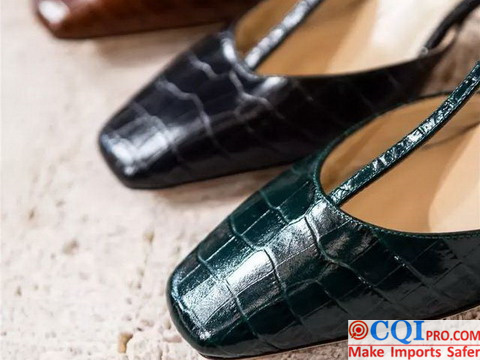By For Safer Imports • 07/20/2021 • No Comments
The shoes produced on the same assembly line,branded foreign famous brands, then can sell three or four hundred yuan in the mall.However,the shoes of their own brands can only sell for fifty or sixty yuan.The market price of the baking tray made by the same kitchenware company is more than 2,000 yuan for the German brand, while the similar products of its own brand only sell for 500 yuan.
This is the dilemma faced by many OEM China. Brand is the most valuable intangible asset of an enterprise. Whoever owns the brand will be competitive. Making efforts to build independent brands is an important support for Chinese companies to continue to climb in the international industrial chain.From imitation to innovation, from OEM to brand-creation, Chinese brands have achieved a huge leap, but compared with brand powers,there is still a big gap in the development of Chinese brands.
For a long time, there are many enterprises in Dongguan and Shenzhen in Guangdong, Hangzhou and Wenzhou in Zhejiang, and Qingdao in Shandong. They take the OEM orders of foreign brands as their main business. After producing the products, they stick importer’s brands to sell to global market. Relying on the well-known brands in Europe and America to do OEM work with developed countries supply chain management experience and a relatively low labor force, OEM China has won orders from all over the world.

As a manufacturing powerhouse, China has a large number of large-scale OEMs in the consumer goods such as clothing,shoes,hats,luggage,digital,and home appliances. According to relevant reports, as early as 2009, 60% of international luxury brands have chosen OEM China. There have been research reports on the sporting goods industry that “Made in China” has occupied more than half of the world’s sporting goods industry, but many of them are not independent brands, but OEMs.
In the home appliance industry, the OEM is also common.In the 1990s, many internationally renowned home appliance multinational companies shifted production to China, making China a “big workshop” for global home appliance production. Through OEM production, the scale of China’s home appliance industry has expanded rapidly, but OEM production is not a long-term solution. This method has also brought a painful lesson to Chinese companies.
OEM China‘s product R&D and sales channel control are in the hands of the consignor. The company has weak bargaining power and low profit margin, but it has to bear the risks of self-built factories, equipment depreciation and production management. Its development is limited to becoming a “processing workshop”. Once the market fluctuates and there is insufficient orders, it will face survival crisis.
With the rapid rise in labor costs in China’s manufacturing industry, some global manufacturing companies have moved their factories to Vietnam and Cambodia. “In retrospect, many companies in China are giving people a job, profits are controlled in the hands of others,which are very meager. They could survive before.At that time, many foreign companies were looking for OEM China processing,we are the world factory. Now the factories are moved to Southeast Asia and Mexico,the job opportunities are gone. Of course it is very difficult.” Zhang Ruimin, CEO of Haier Group, said this.

In recent years, with the rise of new industries such as the Internet, Internet of Things, and robotics,the brand awareness of Chinese companies has gradually increased. Made in China gradually abandoned the cheap labor, low production costs and poor quality labels, social compliance audit was promoted and transformed into “Created in China.” Creating a self-owned brand, upgrading the industry, and seizing the high-end of the value chain has become a common proposition for the entire Chinese manufacturing industry.
The transformation and upgrading of small and medium-sized enterprises often face the problems of supply, demand and distribution. They do not know who to sell, what to sell, and how to sell. Only by identifying the positioning of products and brands,formulating a differentiation strategy can effectively exert the advantages of production and price to ultimately form a brand effect.
When our manufacturing industry begins to enter the high end of the global value chain, how do we participate in the competition and cooperation in the international market? Not Rely on OEM,but innovation and creation.In recent years, a number of outstanding Chinese companies and Chinese brands such as Huawei, Lenovo, and Haier have successfully broken through in the international market, making the world look at the former “OEM China”with new eyes. From OEM to independent brands, more and more Chinese companies are embarking on the road of brand building.
This article is an original article for CQI Inspection, who is committed to providing high-quality product inspection technology and know-how sharing for global importers and retailers to make imports safer.
All rights reserved. The contents of this website provided by CQI Inspection may not be reproduced or used without express permission.
For reprint, please contact with CQI Inspection, thank you.
2543 2607 2659 2667 2676 2682 2683 2685 2687 2692 2693 2699 2700 2705 2708 2714 2715 2716 2743 2744 2746 2748 backpack defect check Children furniture quality control China disposable medical gloves Electric toothbrush cost Electric toothbrush inspection Electric toothbrush waterproof inspection Electronic scale quality inspection Glove testing consultation infrared thermometer testing consultation Lighter inspection Lighter process inspection Mask inspection nitrile gloves inspection Pajamas process inspection Plastic clip quality check Quartz watch inspection Quartz watch process inspection Sofa bed inspection solid flooring inspection stainless steel quality control Umbrella process inspection Wenzhou shoes inspection Zhangzhou watch inspection